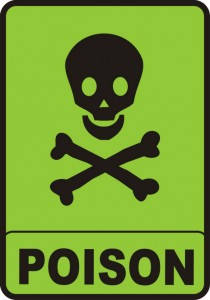While gas and wood-burning appliances are a necessity during the winter months in almost every home, many homeowners fail to realize the danger they may pose if their heaters, stoves, furnaces, or fireplaces are not properly inspected and maintained. Carbon monoxide poisoning from malfunctioning or ill-vented heating appliances kills an average of 430 people per year in the United States. Luckily, there are some simple steps that every homeowner can take to protect themselves and their families from this deadly gas.
What is carbon monoxide?
Carbon monoxide is a colorless, odorless, tasteless gas that is created as a byproduct in most combustion reactions, including the burning of kerosene, wood, propane, and coal. It is often called the “silent killer” because it is almost undetectable.
At low levels of exposure, carbon monoxide poisoning may cause flu-like symptoms, including headache, nausea and drowsiness. In more moderate concentrations, symptoms may include impaired vision and coordination and reduced brain functions. In high concentrations, exposure to carbon monoxide can be fatal. If you believe you are experiencing the symptoms of carbon monoxide poisoning, quickly move to a fresh-air location such as an open window or door before calling emergency personnel.
Sources of carbon monoxide
While carbon monoxide is created by almost all fuel-burning appliances, properly vented and maintained appliances pose little health risk to families. Carbon monoxide poisoning may result from faulty furnaces, cars left running in closed garages, portable generators, un-vented gas heaters, leaking chimneys, or gas stoves. Improperly maintained or blocked flues and vents may also cause carbon monoxide gas to enter a home.
Ways to reduce carbon monoxide
Luckily, there are several steps that homeowners can take to reduce their risk of exposure to deadly carbon monoxide gas. The most important preventative measure that can be taken is to have all fuel-burning heating appliances, including stoves, fireplaces, water heaters, and furnaces, inspected by a professional every year. Trained technicians, such as those at Mason’s Chimney Services are able to ensure that all venting and duct work is in good condition, intact, and unblocked.
In addition to these annual inspections, homeowners can take several common sense precautions to reduce their risk of exposure. First, even during power outages generators should never be used inside homes, garages, or sheds as carbon monoxide gas can quickly build up inside these enclosed spaces even hours after the generator has stopped running. Next, never leave stoves or ovens running as a way to heat a room or area of the house. When using space heaters, consider replacing un-vented heaters with vented ones and keep all vents to the outside clear of snow and other debris.
Finally, if you need to warm a vehicle or leave it idling for any reason, remove it from the garage. Cars should not be left running in the garage, even when the door is open. Also, before driving check the exhaust pipe to make sure it is not blocked by snow or ice, which could cause carbon monoxide to not properly vent from the vehicle.
Mason’s Chimney Service’s NCI-certified Carbon Monoxide Analysts have been specially trained to inspect most home appliances for signs of carbon monoxide leaks. In addition, they can install NSI low-level carbon monoxide monitors. These monitors provide your home and family with an extra level of protection as they are more sensitive and more accurate than the do-it-yourself devices sold in home improvement stores.

